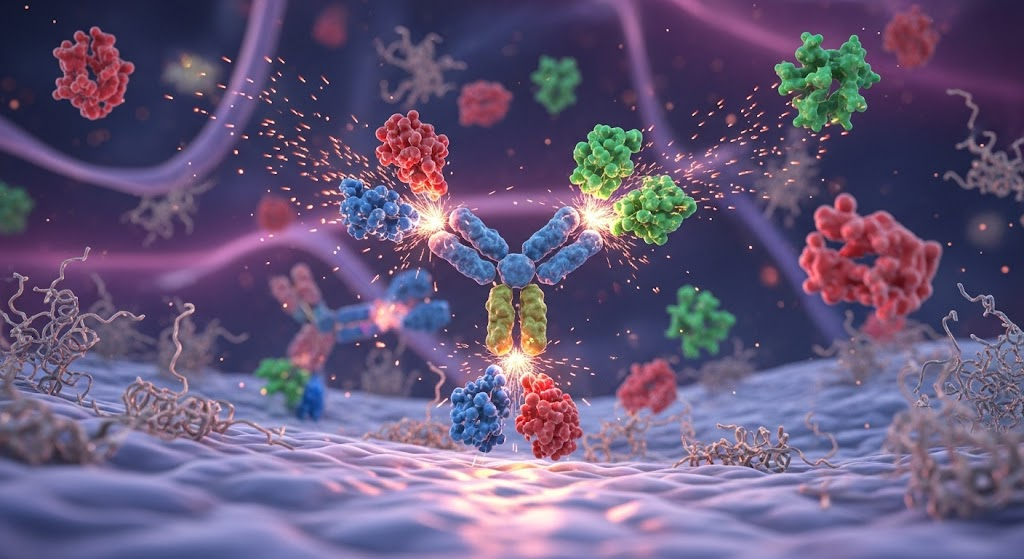How Do Active Transport Proteins Work?

A cell is not less than a hidden universe. There’s always a constant hustle. Nutrients are flowing in, waste is being pushed out, ions are balancing, and signals are firing.
Behind everything are highly specialized gatekeepers. These are known as active transport proteins.
But what if we could see them in action? What if we could selectively detect, study, or even block these molecular machines in disease?
It is where antibodies, especially custom-designed ones, step into the spotlight. They transform these invisible players into visible targets in -
-
precision research,
-
diagnostics, and
-
therapy.
Let’s check out how active transport proteins work. And also why they’ve become high-value targets in the world of antibody-based research.
So, What Exactly Are Active Transport Proteins?
Active transport proteins are membrane-bound molecules. They are responsible for moving substances across the cell membrane against their concentration gradient.
These include the areas of low concentration to high concentration. The active transport requires energy, usually from ATP or another gradient.
There are two major types:
-
Primary active transporters – use ATP directly (e.g., the sodium-potassium pump).
-
Secondary active transporters – use energy from existing ion gradients (e.g., sodium-glucose cotransporters).
Their job? They keep cells alive by -
-
maintaining internal balance,
-
enabling nutrient uptake, and
-
removing waste and toxins.
Why Should Researchers Care About Active Transport Proteins?
Because these proteins are:
-
Highly specific and localized
They are usually expressed in particular tissues or cell types.
-
Important in disease mechanisms
They are often overexpressed, mutated, or dysregulated in disease.
-
Accessible targets
Most of them span the cell membrane. They expose extracellular loops perfect for antibody binding.
How Are Antibodies Used To Study Active Transporters?
Active transport proteins are typically low in abundance. They are embedded in membranes. It makes them tricky to study. So, it is where highly specific antibodies become essential.
Here’s how antibodies are used in research:
1. Western Blotting & ELISA
Antibodies can detect active transport proteins in cell lysates. It is done to confirm expression, especially in response to stimuli or treatments.
2. Immunohistochemistry (IHC)
You can visualize where in a tissue a transporter is expressed.
|
For example, antibodies targeting P-glycoprotein can show where drug resistance is arising in a tumor. |
3. Flow Cytometry
Researchers can quantify transporter expression on live cells. They use antibodies that recognize extracellular domains. The cells are ideal for sorting cell populations or tracking immune responses.
4. Phospho-Specific Antibodies for Transporters
Many transporters are regulated by phosphorylation. Antibodies that detect specific phosphorylated states of transporters can be powerful tools for determining activation status. These include phosphorylated CFTR in cystic fibrosis.
What Is The Future Of Antibody-Based Imaging and Targeting of Transporters?
The growing technologies are now using antibodies to:
-
Keep a track of transporter dynamics in live cells
-
Develop antibody-drug conjugates. The one that targets transporters.
-
Create bispecific antibodies. They guide immune cells to transporter-rich tumor cells.
-
Map transporter expression across tissues for biomarker discovery.
Transporters are more than just molecular pumps. They’re -
-
diagnostic markers,
-
therapeutic gateways, and
-
research windows into the cell’s inner workings.
Finally…
You need to know that the active transport proteins are more like the engines. They keep cells running. Further, they power nutrient uptake, waste disposal, and signal propagation. However, for researchers, they also represent a goldmine of information and opportunity.
You can detect, study, and even control these critical proteins through the use of well-designed antibodies. These antibodies unlock the invisible world of active transport. It is done with precision, specificity, and purpose.
- Art
- Causes
- Best Offers
- Crafts
- Dance
- Drinks
- Film
- Fitness
- Food
- Giochi
- Festival
- Gardening
- Health
- Home
- Literature
- Music
- Networking
- Altre informazioni
- Party
- Religion
- Shopping
- Sports
- Theater
- Wellness



